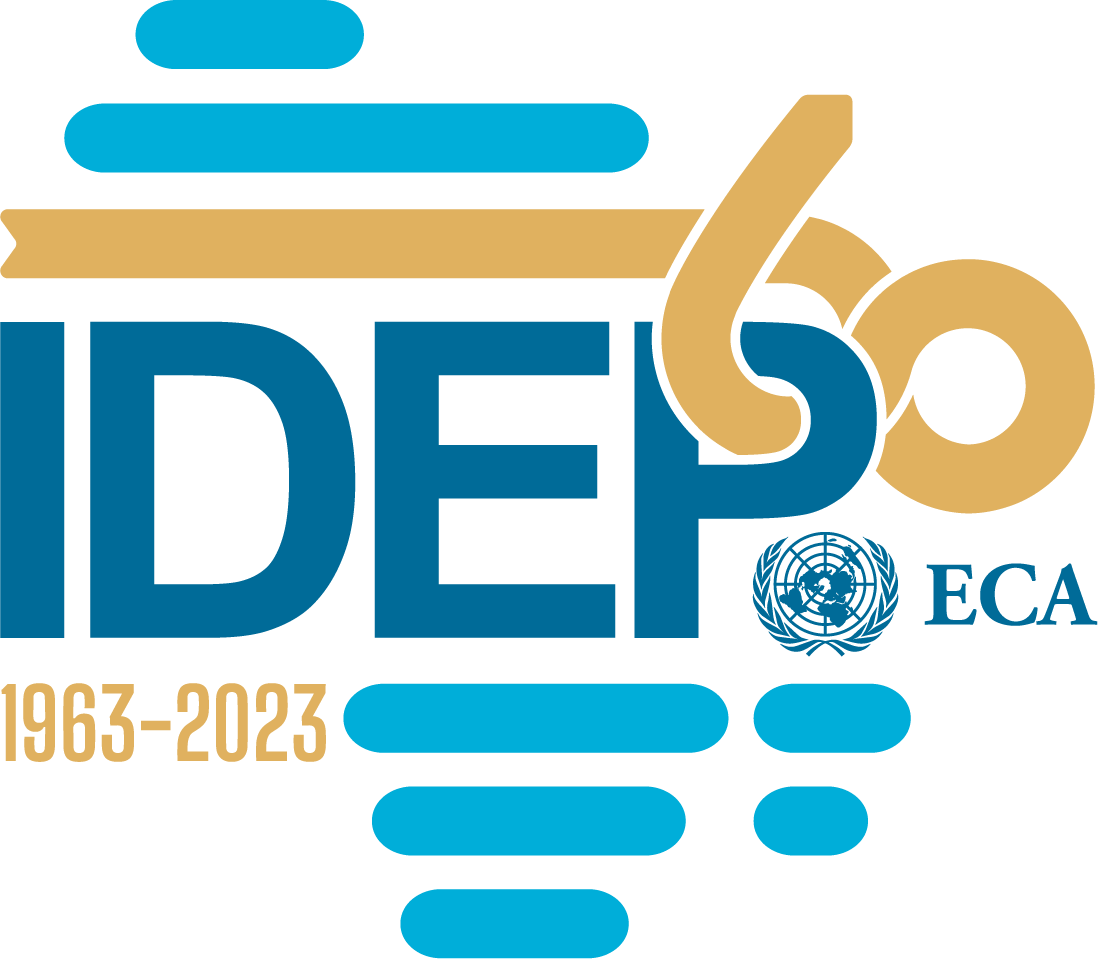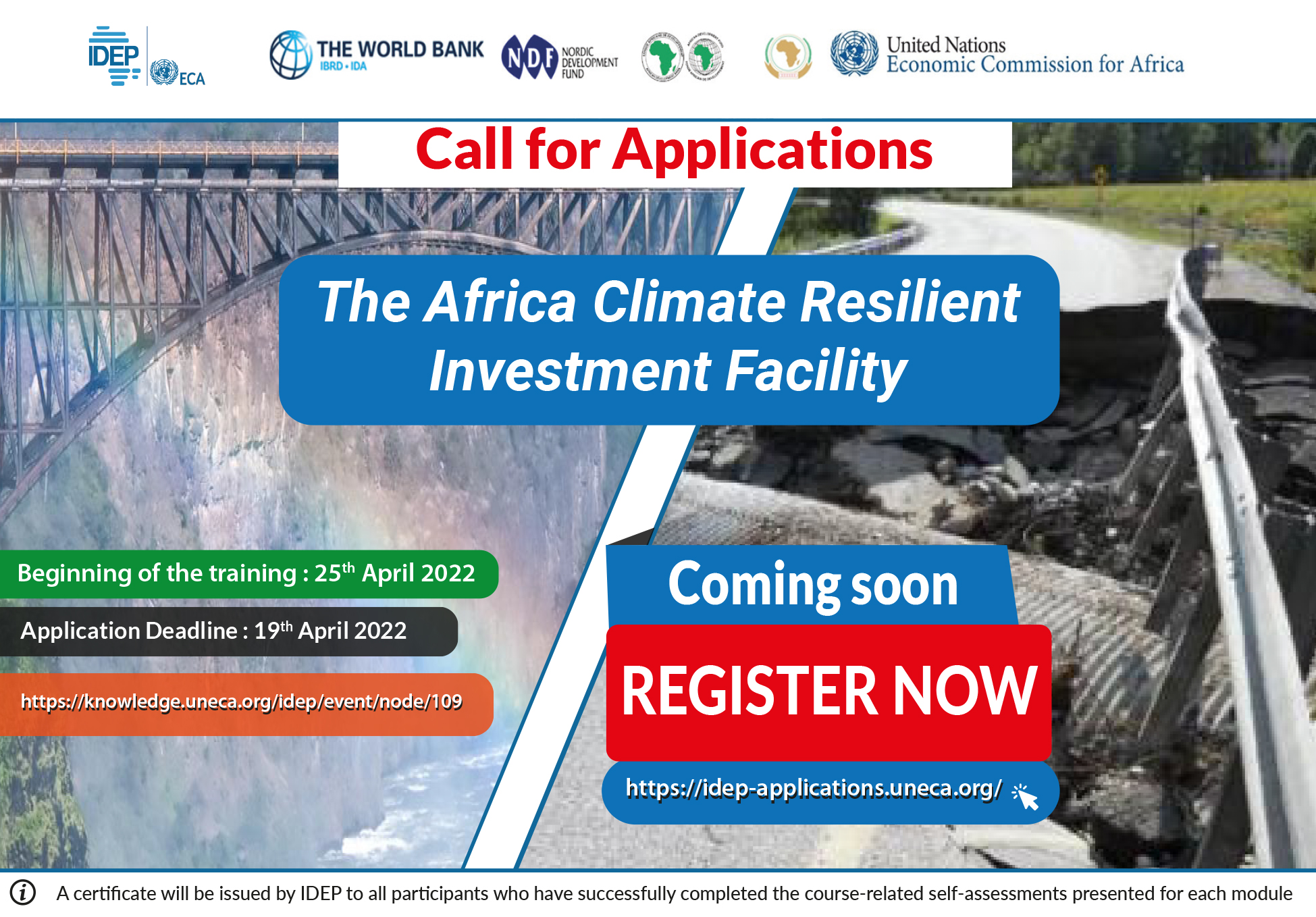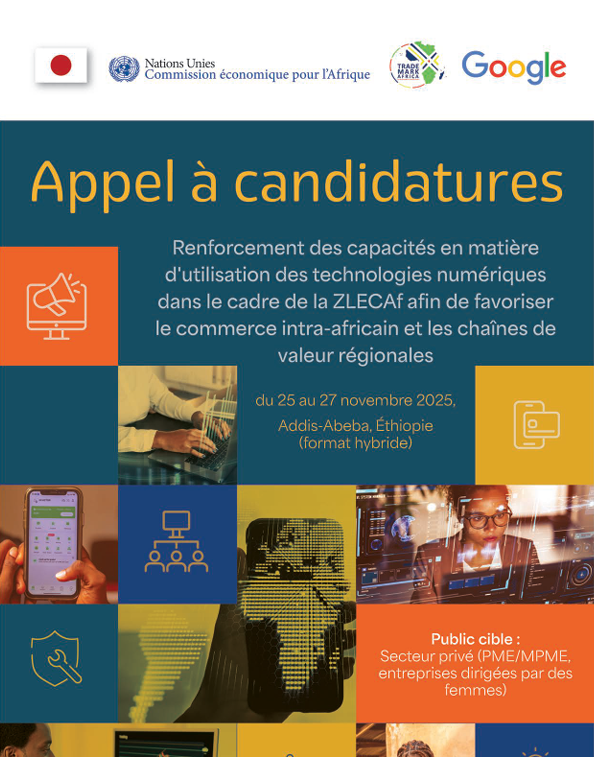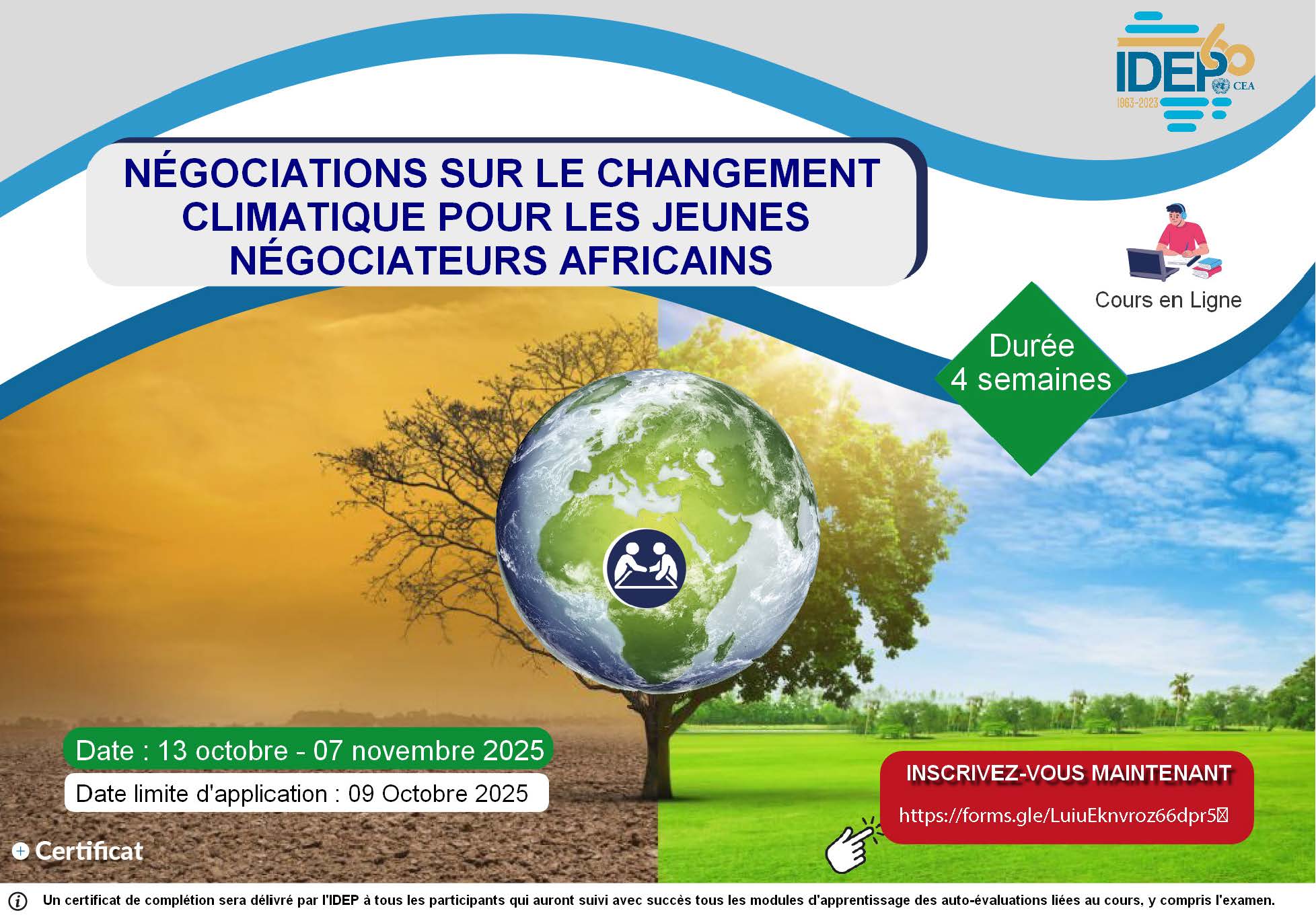The Africa Climate Resilient Investment Facility
Announcement in Brief
|
Programme Rationale ?
Africa has huge investment deficits to close in critical sectors, including energy, agriculture, water,
transport, cities, and ecosystems. These sectors are central Africa’s economic development but are
also very sensitive climate change impacts, which are already costing African countries on average 5
percent of GDP per year. Intra-seasonal and longer timescale variations of rainfall, temperature
trends and climate extremes, together with the growing demand for food and energy, put additional
pressures on Africa’s production systems and natural resources management.
The Paris Agreement, based on voluntary national commitments to reduce emissions, aims at
keeping global temperature increase below 2 degrees Celsius above pre-industrial level and to
pursue efforts to limit the temperature increase to 1.5 °C by reducing global emissions by 45
percent by 2030, reaching carbon neutrality by 2050. While this objective is possible with stringent
measures by all countries, global commitments, especially by many developed countries, at COP26
in the Glasgow Climate Pact, fall far short of the emission reductions needed to meet the goal of the
Paris Agreement. It is therefore very important that the substantial investments needed to close
Africa’s development gaps are made in ways that build resilience to climate change.
Specific Objectives
Module 1: Introduction to AFRI-RES and climate resilience
Introduction
- Lecture 1: Overview: The nature of uncertainty from probabilistic to Deep Uncertainty
The Nature of Climate Change and Variability
- Lecture 2: Introduction to risk, resilience, and complex systems
- Lecture 3: Resilience in the face of climate variability and change
- Lecture 4: Risk, Resilience and Robustness in Decision making in Planning and Design
- Lecture 5: Understanding and use of AFRI-RES Resilience Attributes and the Resilience Booster Tool
- Lecture 6: Decision-making in the context of climate change uncertainty
- Module 2: Climate modelling
FOR MORE INFORMATIONS





